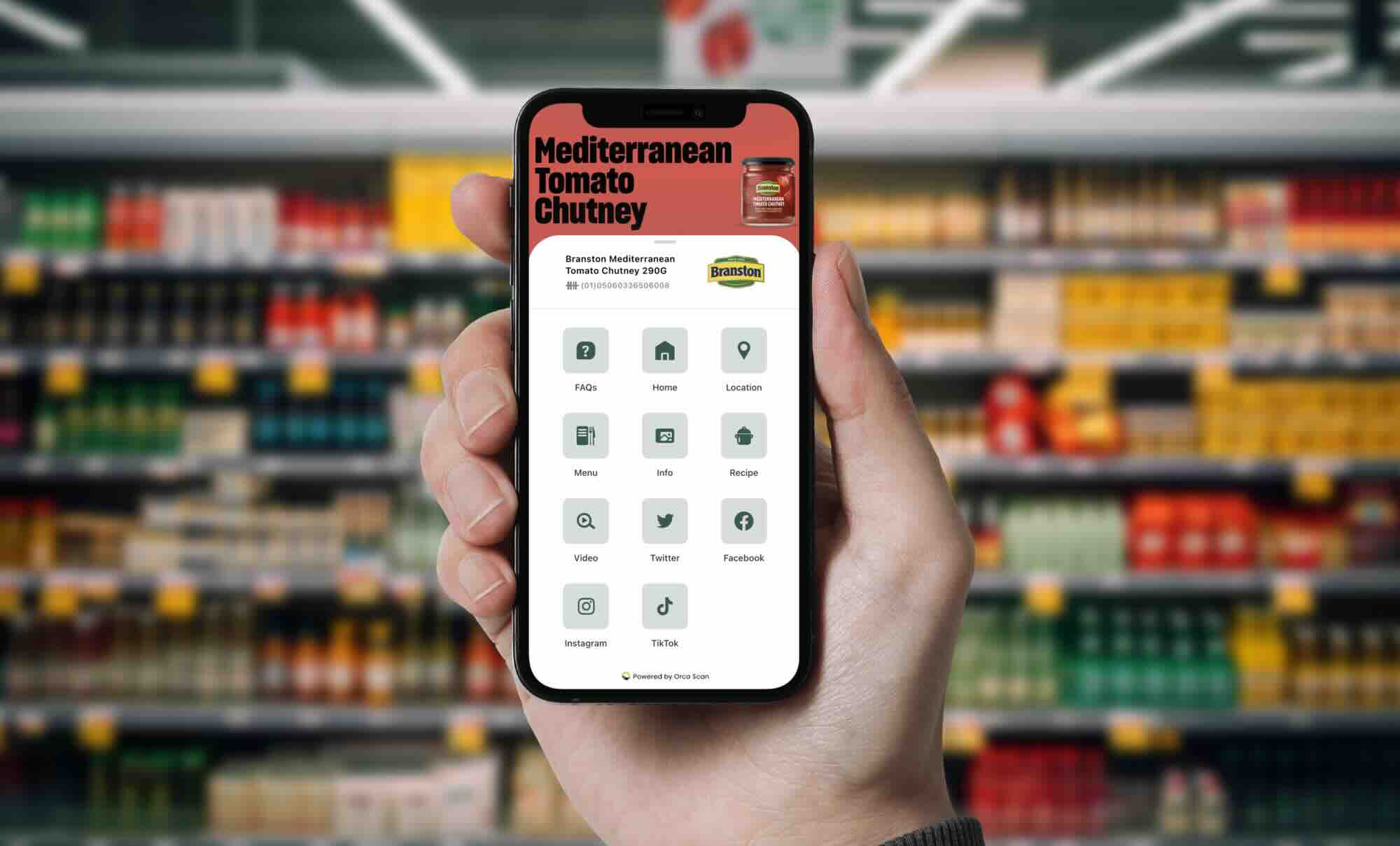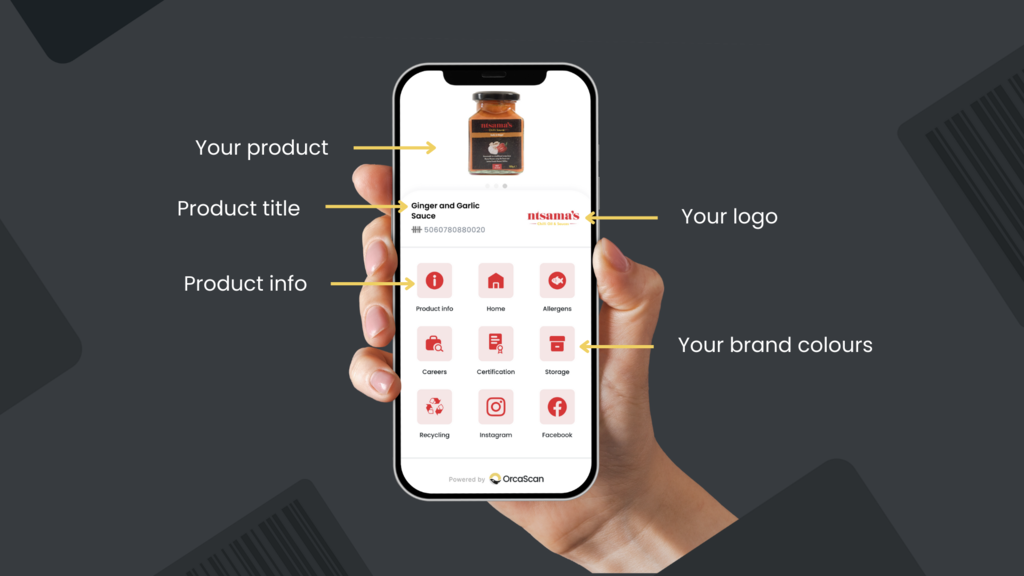
One of Britain’s most-loved food brands, Branston, is using the Orca Scan GS1 QR code generator to enhance its customers’ experience in major UK supermarkets.
While this new Digital Link QR code might look familiar, it marks a new era for the global retail industry as it’s powered by GS1’s Digital Link standard. This new standard works by connecting billions of physical products to the internet and giving each one its own unique home page that brands can modify long after the product has left the production line.
How does the GS1 Digital Link barcode work?
It’s really very simple. The original 1D barcode used on retail products today is turned into a dynamic QR code. When consumers point their smartphone camera (no app required) at the QR code, they will be presented with a web page containing all the information they need about the product, such as recipe ideas, ingredients and allergens, sustainability and recycling information.

Why is this important?
The retail industry has set a date to make the transition to accepting 2D barcodes at point-of-sale (POS) or point-of-care (POC) — referred to as Sunrise 2027. At this point, the traditional 1D barcode you see on your packaging today will be phased out and replaced with this new Digital link QR code. Branston is an early adopter of this technology, continuing its mission of pairing tradition with innovation.
NOTE: You must keep the existing 1D barcode on your product until 2027 to allow for global computer systems to be updated to support the new GS1 QR code.
How can I create a GS1 Digital Link QR code?
The Orca Scan GS1 Digital Link solution was designed in collaboration with GS1 UK to make it as easy as possible to create and maintain GS1 Digital Link QR codes. You can follow the simple GS1 Digital Link step-by-step guide to get started.
Need help upgrading to GS1 Digital Link?
As with everything at Orca Scan, if you need help you can chat with us live or book a free demo.
